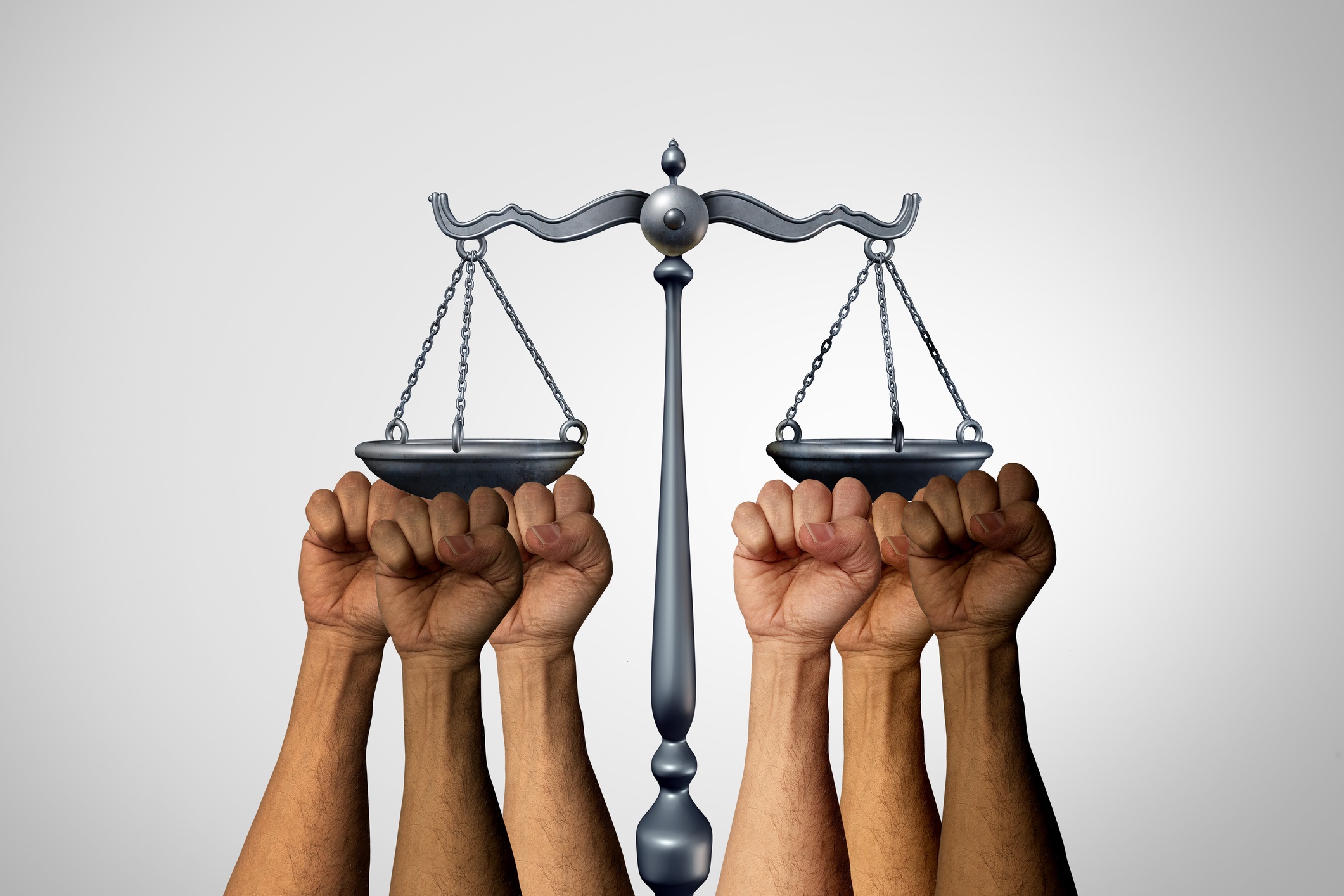Over four years have passed since streets in New York City and across the US erupted in protests over the murder of George Floyd. This past summer, just a few days after the ten-year anniversary of Eric Garner’s death at the hands of the NYPD, the Mayor’s Office of Criminal Justice, in partnership with the CUNY Institute for State and Local Governance, announced a $6.5 million investment in restorative justice programming at 16 community-based organizations across the City.
“New York City’s historic investment in new restorative justice projects in schools, court-based programs, substance use support, training programs, and more is a testament to the real potential this work can have in a wide range of contexts,” said Michael Jacobson, CUNY ISLG director.
This most recent batch of funding for restorative justice (or RJ, for short) builds on a host of existing De Blasio and Bloomberg-era harm reduction programs. Alternatives to Incarceration (ATI) programs, for example, divert people from jail into neighborhood-based supportive services. Transitional housing and Community Justice Reentry Networks offer formerly incarcerated people a place to live and wraparound supports as they reacclimate to life in the community. Jail and prison-based job training, as well as educational and mental health initiatives have also grown, providing inmates with opportunities to earn new degrees and certifications while serving time or waiting for trial. Perhaps most dramatically, the infamous Rikers Island—a place representing everything crowded, dysfunctional, and unjust about big city jail systems—is closing.
Yet in today’s political discourse, there is a sense, even among Democratic Party politicians, that New York City is as dangerous as ever and would benefit from a healthy dose of good ol’ law and order.
“My number one priority as Governor is keeping New Yorkers safe in the streets, in their homes, in their schools, and on the subway, and we will do whatever it takes to make our subways safer for riders,” said Governor Kathy Hochul in 2022. The average straphanger might have noticed the “omnipresence” (to use the governor’s own word) of NYPD officers on MTA platforms, part of an initiative to address a surge in so-called “subway crime” that has supposedly coincided with the City’s economic recovery. Mayor Adams, himself a former police captain, ran and won on a no nonsense, tough-on-crime platform.
It can be challenging to celebrate or even measure RJ’s small wins when they are dwarfed by the countless contingent issues straining the traditional justice system: poverty, the opioid epidemic, a housing shortage, rising rents, and a mental health crisis, just to name a few. With so many systems failing New Yorkers, as the political pendulum swings away from “defund the police,” decarceration initiatives, including RJ, are an easy scapegoat.
Just a few days ago, the American people reelected Donald Trump as president. He has not been shy about gutting social service programs, nor has he toned down his rhetoric towards “criminals” (despite his own felon status). If RJ really succeeds at redirecting people from a harmful system, how can we protect it against what is likely to come during Trump’s sequel? And with that, how can we make sure it is really working as best as it can?
What is RJ?
“At its core, restorative justice defines ‘justice’ in a radically different way than conventional criminal justice responses,” writes Lindsey Pointer, Ph.D, an Assistant Professor at the University of Vermont Law School. “Rather than justice as ‘punishment,’ restorative justice conceives of justice as “repair” to the harm caused by crime and conflict.”
In practice, this typically takes the form of “bringing the involved parties together in a safe and voluntary dialogue with well-trained facilitators,” with the goal of fulfilling what the victim of a crime, as well as the larger community, truly needs to successfully move on: “information, validation of their experience and pain, assurance that it will not happen again, repairs, and an apology.” There are, of course, some prerequisites for this to work: everyone must opt-in, the offender must admit to causing harm, and the mediators must be well-trained and well-resourced. When this happens, the results can be transformative.
Let’s take a look at a case study.
In 2016, a North Carolina man named Donald Fields Jr. stabbed his father to death at the height of a heated argument. He was charged with murder and faced a possible life sentence in prison. But rather than proceeding with business as usual, the Fields family chose a novel approach. “I do not want to lose him to the system,” said Alex Fields, Don Jr’s uncle, in an interview with the journalist Oliver Laughland for a 2023 piece in the Guardian. “I do not want him to be another statistic. He would be swallowed up. So often, Black men, when they go to prison, they throw away the key or do not rehabilitate them.”
First, all parties decided to opt-in to the process. Then, the Fields family, without Don Jr at this point, met for six months with Annette Love—a local minister and facilitator with Restorative Justice Durham—and an independent lawyer, far away from court in the familiar and safe offices of a local church. They would “take turns talking uninterrupted, the speaker holding a small stone until they were finished.” These sessions unearthed many of the traumas that had been buried deep under the many layers of family memory. After some time, Alex and Don agreed that they were ready to meet. Emotions ran high during the first few sessions, “but gradually,” writes Laughland, “as the uncle and nephew grew more acclimatized to each other’s presence, they edged forward.”
By the end of the year, other family members were invited to join the duo, and after another year of meetings, “Love believed they had brought the process to a natural close. Members of the family were talking again, laughing together, even.”
This meant that it was time to reconvene at the DA’s office. The family agreed that Don Jr did not need to be incarcerated any longer — they had seen enough change. What they really needed was for him to transition back home, gradually, to his family and community.
After six years at county jail, Don Jr. pleaded guilty to voluntary manslaughter and was released under the conditions in his “repair agreement,” a document the Fields family created together with the help of their larger reconciliation team, including facilitators, lawyers, and the DA’s office. The conditions were: “He would not commit any new crime. He would continue to receive therapy. He would stay away from his grandmother’s home, and respect the boundaries of certain family members who still wanted him locked away. He would find a job and live in transitional housing. If he did not fulfill the terms, he could receive a harsher sentence of up to 10 years. He would have nine months on the outside to prove he could uphold the conditions and transition back into the public.”
His nine months passed. This was the first successful case of its kind in the United States.
A Broader Movement
The case of Don Fields Jr illustrates how RJ can succeed even in the most gruesome of situations. As the movement grows, so has the effort to replace more subtle punitive practices outside the traditional justice system in places that have, over time, grown to replicate it. The recent batch of MOCJ funding supports organizations working in substance abuse clinics, NYCHA developments, community centers, and most substantially, schools.
Much has been said about the school-to-prison pipeline, and how buildings and campuses themselves—fortified with hostile and invasive metal detectors, security cameras, and even facial recognition systems—often replicate the built environments of detention centers. A recent longitudinal study published in the American Journal of Criminal Justice found that kids attending schools with “drastic security” measures feel less safe and more stigmatized. Telling kids they are not to be trusted only invites them to misbehave and cause trouble.
Its champions argue that RJ is not only a more rational way of responding to dangerous or harmful conduct, but that it just makes more sense to kids. “Restorative justice harm reparation,” writes Elana Thompson, a legal fellow at the ACLU, “is often the natural, direct consequence of a misbehavior (e.g. scrubbing graffiti off the wall you spray-painted), while punitive measures are generally inflexible and unrelated, or counterintuitive to the offense (e.g. prescribing detention for fighting, or giving suspension for excessive tardies).”
Many teachers have known this for a while. On the Restorative Justice Initiative’s directory of schools, organizations, and independent practitioners in NYC, one listing states that “the principles of RJ have been present at Brooklyn International High School since its founding in 1994. Even if the terminology was different, community building, culturally and linguistically responsive and sustaining pedagogy, socio-emotional learning, and non-punitive forms of assessment and discipline have always been at the heart of this school’s mission.” This school, like many others listed in the directory, partners with a nonprofit organization for coaching and support.
The past ten years have seen a huge proliferation of restorative justice organizations, independent practitioners or consultants, and collectives, ready to offer their expertise to schools, community groups, workplaces, married couples, centers of faith, and more. While they share many of the same principles, each organization approaches the specifics differently. Some have certifications, some don’t, while some question the validity of certifications in the first place. This summer’s MOCJ funding supports a mix of groups, including large nonprofits, small start-up collectives, and freelance experts. Winning a contract with the City is not easy: one must prove to the procurement team that they can provide the services and demonstrate that they work. But with so many “experts” in a rather novel field with lofty goals and a wide range of actual practices, how can we be sure some of our city’s vulnerable residents are in good hands? Are we doing enough?
Proceeding with Caution
As the number of practitioners grows, critics of restorative justice have decried the movement as untested and trendy, nothing more than “the current flavor of the month” for “politically astute” opportunists.
After all, RJ is not the first attempt to move the criminal justice system away from punishment and towards repair. It was the idea that criminals should be rehabilitated that spurred the growth of prisons in the first place. Early advocates for incarceration understood the penitentiary as, according to journalist Greg Miller, “a more humane and effective way to punish criminals than corporal or capital punishment.” So instead of a hundred lashes in a packed public square, the guilty man would be sent away to a clean and orderly institution somewhere out in the country, far from the many vices of city life, where he could learn to read and write, put down the bottle, pick up a quality trade, and receive a (usually religious) moral education under the supervision of trained professionals.
Paternalistic, sure, but more humane? Perhaps in theory. Most of us would probably agree that this vision never materialized, and at some point the purpose of prisons became punishment itself. It is widely accepted in today’s public discourse that the American criminal justice system is uninterested in rehabilitation, fundamentally punitive, and for a large contingency, racist.
The fear is that RJ nonprofits and institutions might slowly morph into a kind of parallel justice system, and that over time, and without proper oversight, these practitioners might borrow from and then replicate elements of the traditional model they so strongly purport to reject. With overloaded courts, it might become cheaper to simply contract out certain departments to so-called “restorative” nonprofits who might cut corners to protect their bottom lines. This imagines a kind of dark RJ wild west: if funding becomes more and more available, new bad-faith entities might continuously spawn to join in on the gold rush. RJ would then become yet another “industrial complex” in which public resources are diverted towards the nonprofit and even for-profit sectors.
Others argue that the principles of RJ are too lofty and over-simplified, and create an environment that is too focused on “producing” a happy ending. “Restorative justice is ‘a set of ideals about justice that assumes a generous, empathetic, supportive, and rational human spirit,’” writes Vox’s Jerusalem Demsas. “It imagines a world where victims can be magnanimous about some of the most heinous transgressions, guilty offenders can be truly apologetic, and the broader community is positioned and able to help both parties.”
For example, one RJ nonprofit’s “theory of change” for “breaking the cycle of crime” finds “two drivers to be most relevant and effective … first, prisoners form new positive self-identities that replace past negative self-identities, and second, they develop healthy social relationships that support them when they return home.” In practice, things are always a lot more confusing. Forming a “new positive self-identity” can be a lot of work, as is developing positive social relationships, while claiming that personal transformations can “break the cycle of crime” can deflect from systemic problems and put an unfair burden on individuals.
RJ also requires a clear distinction between offender and victim, but such are often ambiguous. Imagine a hungry teenager with abusive parents who misbehaves at school and causes harm to a teacher or fellow student. The child might imagine himself as the true victim, and those he harmed as part of a system that has subjugated him. If he were to stand in front of a crowd and apologize, and if his victim were to offer forgiveness, both parties may question the other’s sincerity. A 1999 study followed a group of minors through a restorative justice program. While 61 percent of offenders said they really were sorry, just 27 percent of their victims thought the offenders were sincerely apologetic. In court, a victim might feel guilt withholding forgiveness, knowing that if they were to back out of the process the offender would be sucked back into the traditional system. Would the victim, then, have now done harm unto another?
Both eliciting and accepting an apology under duress creates resentment. In the worst of cases, a restorative justice circle is not actually about the offender or the victim, but about everyone else watching—the community—who expects a transformative moment of catharsis and release. Demsas sums this up well: “The specter of forgiveness that hangs above restorative justice proceedings can be a hollow and fragile imitation of the real thing, and it carries with it the potential to reinforce cycles of violence.”
A Just Future
There are enough case studies to show how restorative justice can work well under the right conditions. As its reach expands, limiting RJ’s negative consequences will make sure it can best serve current participants and help it survive the added scrutiny of the incoming law-and-order administration.
The authors of perhaps the most pointed and substantive critique of the movement—which include Howard Zehr of Eastern Mennonite University, widely recognized as the “grandfather of restorative justice”—propose a series of action steps to improve and sustain RJ for both practitioners, advocates, and, most importantly, victims.
They argue that for RJ to work, its practitioners must have access to quality resources—and this does not just mean more money. Teachers and school counselors need curricula, coaching, and administrative support to successfully transition to using restorative techniques with their students. Courts must build relationships with trusted, vetted community partners with clear practices in place. Oversight must be extensive, agile, holistic, and not just focused on securing successful outcomes. Sessions must “reject a cookie cutter approach” and instead take into account the complexity of the human experience. Reconciling the development of standards and the personalization of services is a challenge, but not impossible.
Additionally, victims must be able to continuously express their need throughout the entire restorative justice process. Their needs will never be static, and RJ must itself be flexible and dynamic. Some action steps include advocating for RJ only when it is “responsive to and a reflex of victim needs,” continually assessing, documenting, and articulating the concerns and changes in attitudes of victims, and becoming more vocal in defining the community’s proper role—and acknowledging the fragility of “community” itself.
Ultimately, RJ must recognize its own limitations and dependencies. While it may offer transformative moments for some individuals, it won’t for everyone, and shouldn’t be expected to. It certainly will not dismantle the cycle of violence on its own.
But it can produce moments of true healing and reconciliation, as in the case of Don Fields Jr. who, just before being released back to his family, presented the following statement in court:
“I would like to take this moment to thank restorative justice, the honorable judge, and my attorney for the opportunity to reshape my life and appreciate this chance to continue on the quest of a positive mindset, maturity, dignity, self-love and self-respect”.





